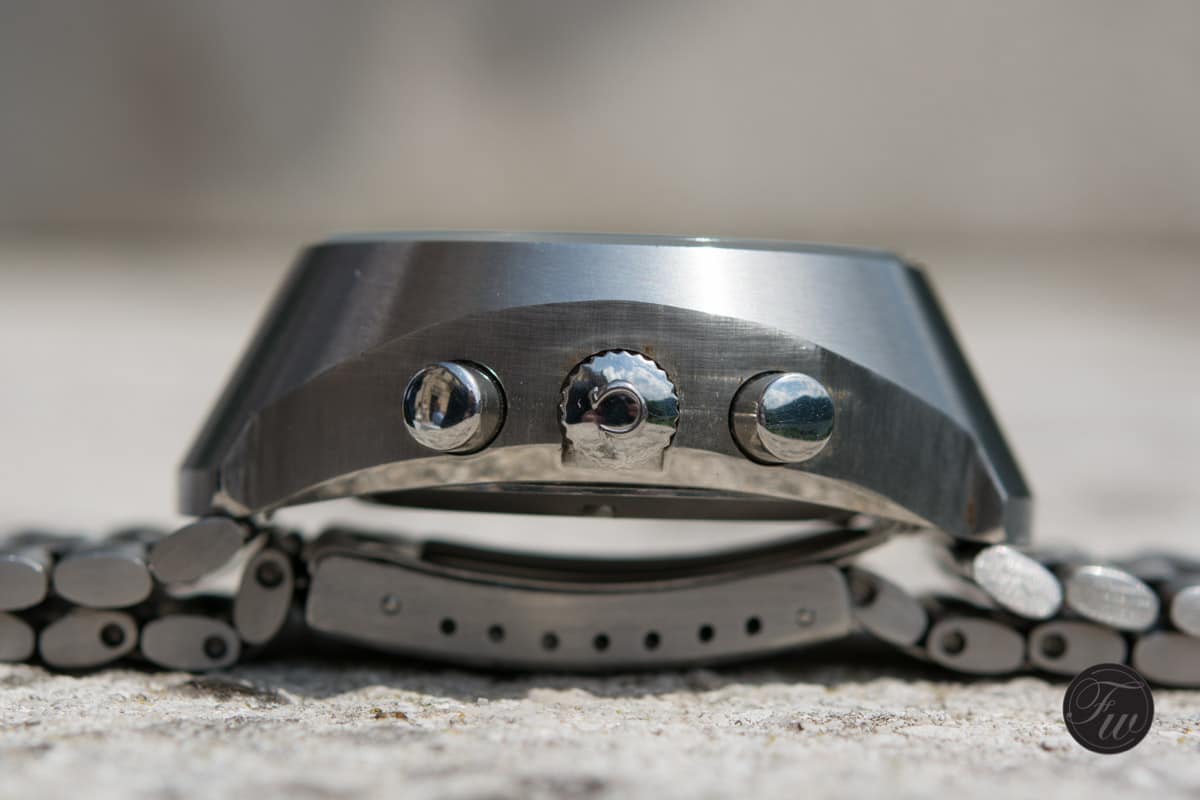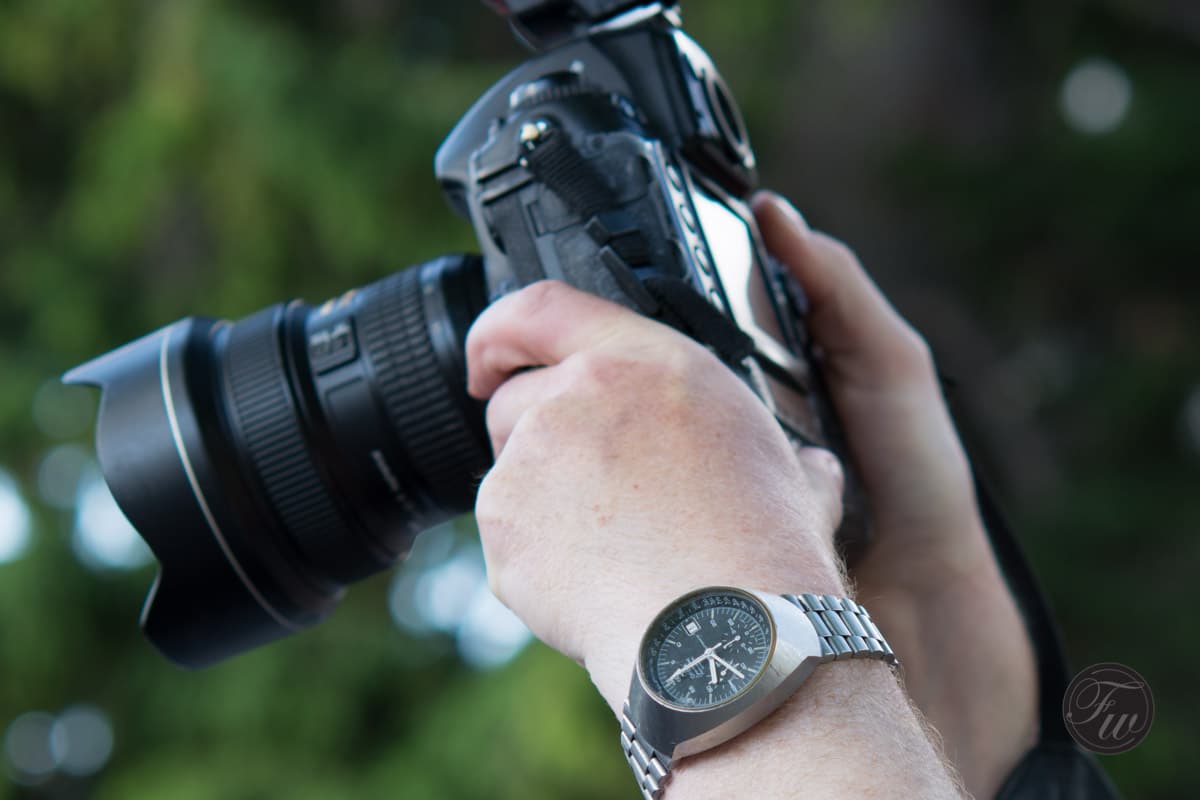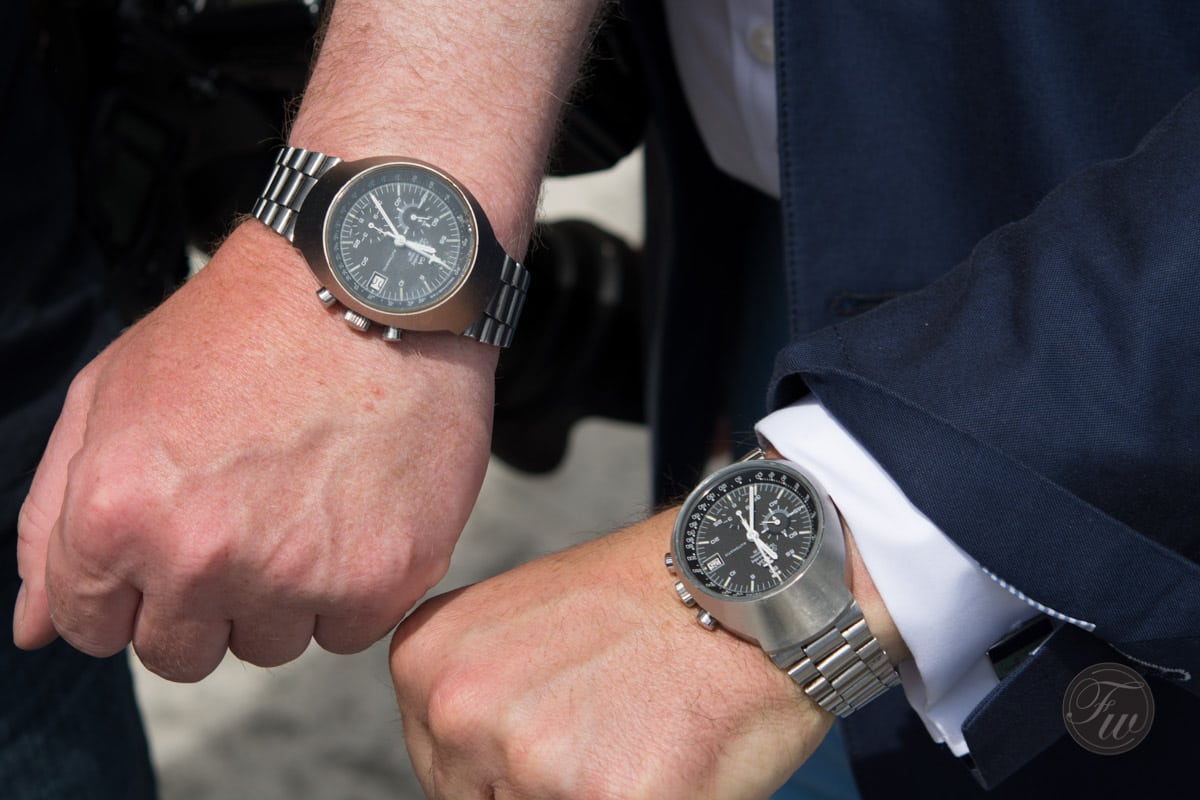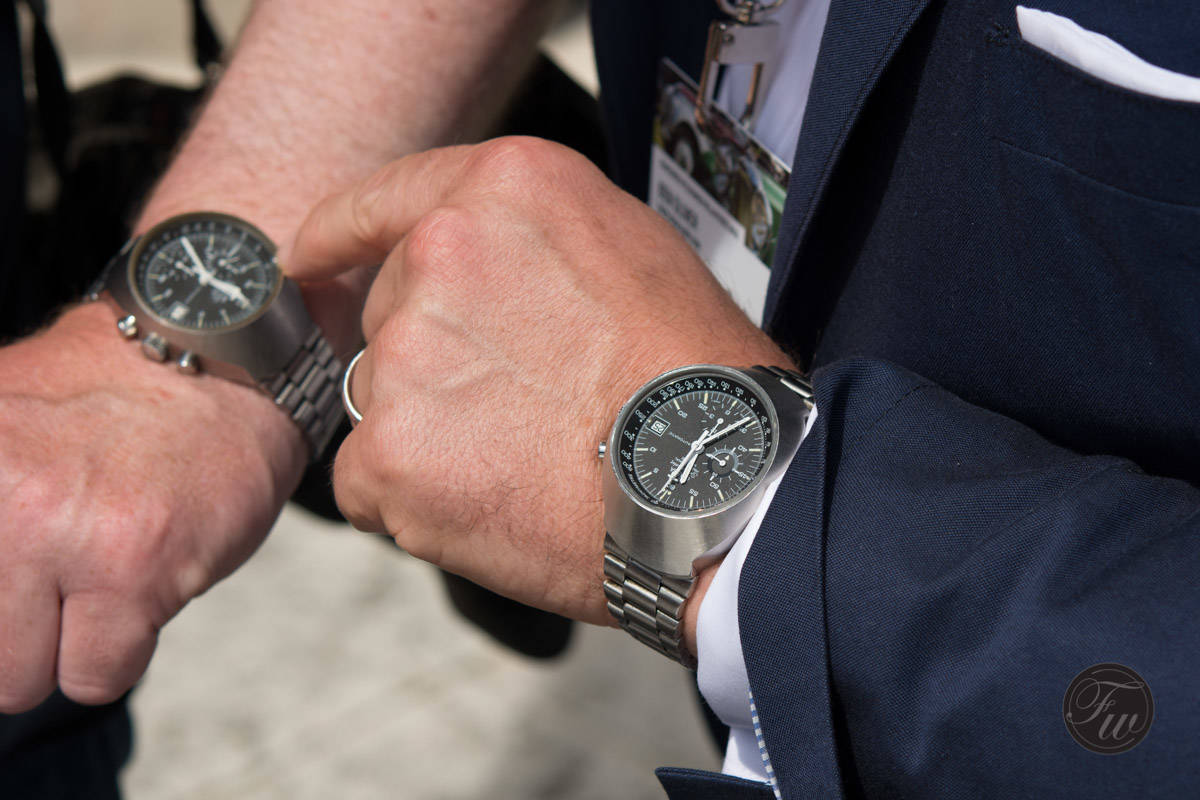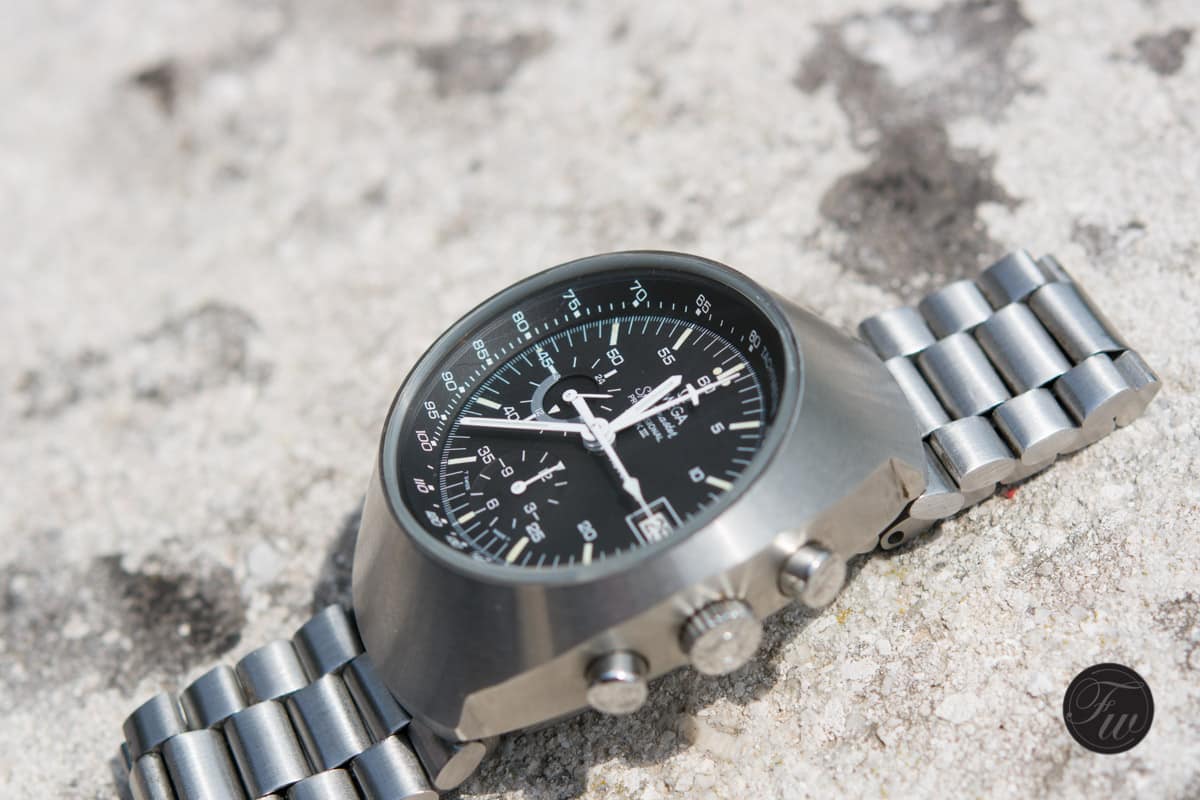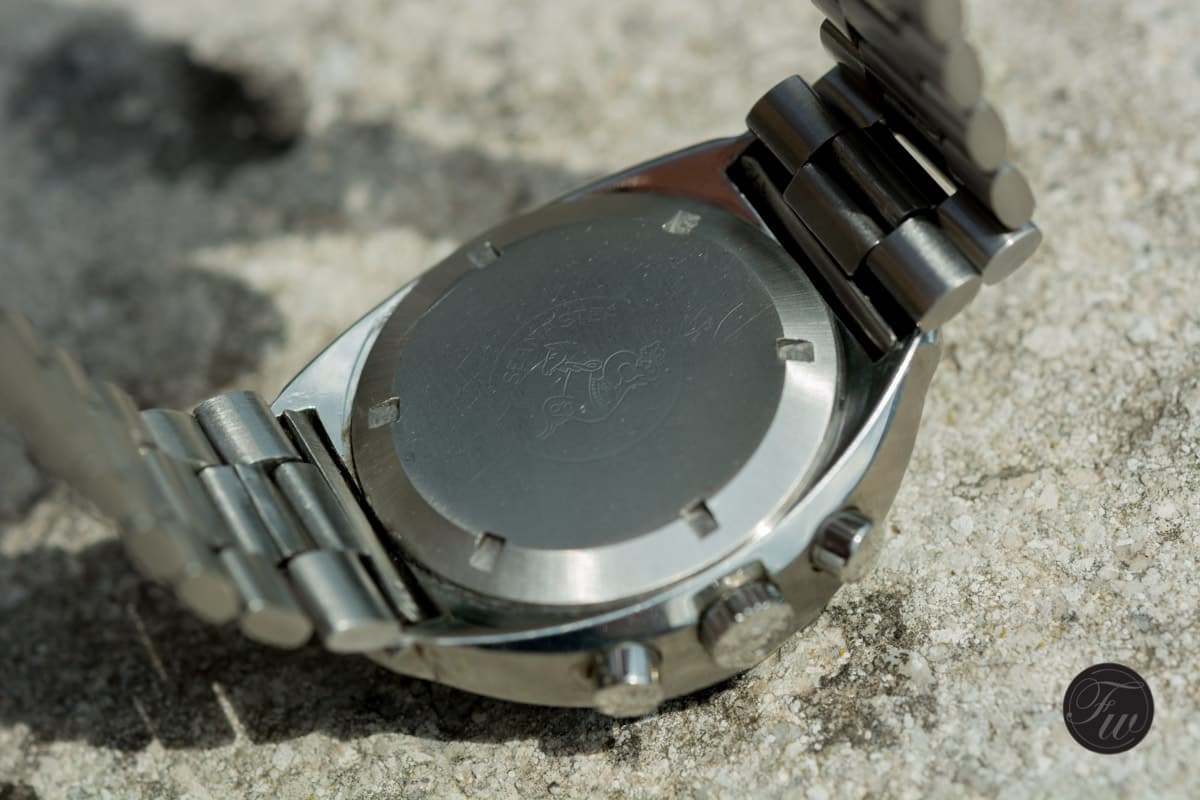Speedy Tuesday – OMEGA Speedmaster (Professional) Mark III 176.002 From Ben Oliver
It’s Speedy Tuesday! Just last weekend I’ve met Ben Oliver, a car journalist from the United Kingdom who writes for a number of titles. He told me about his love for mechanical watches and vintage chronographs in particular. One of the watches he carried with him last weekend – it was during the Concorso d’Eleganza Villa d’Este 2014 in Italy – was the 17mm thick Omega Speedmaster Professional Mark III from 1972. A watch that is quite difficult to fit under your sleeve.
 The Omega Speedmaster (Professional) Mark III reference 176.002 was introduced in 1971 and featured an automatic chronograph movement for the first time in a Speedmaster. Omega and Lemania jointly developed this movement (officially documented as the Omega caliber 1040a) also known as Lemania caliber 1341.
The Omega Speedmaster (Professional) Mark III reference 176.002 was introduced in 1971 and featured an automatic chronograph movement for the first time in a Speedmaster. Omega and Lemania jointly developed this movement (officially documented as the Omega caliber 1040a) also known as Lemania caliber 1341.
After the production of the Speedmaster (Professional) Mark III in 1973, there was a batch of 2000 Lemania caliber 1341 based movements that were certified as an official chronometer. This batch was dubbed Omega Caliber 1041 and was solely used for the Omega Speedmaster 125, to mark the 125th anniversary of the Bienne based company. More background information can be found on the website of Speedmaster legend and friend of mine, the late Chuck Maddox. 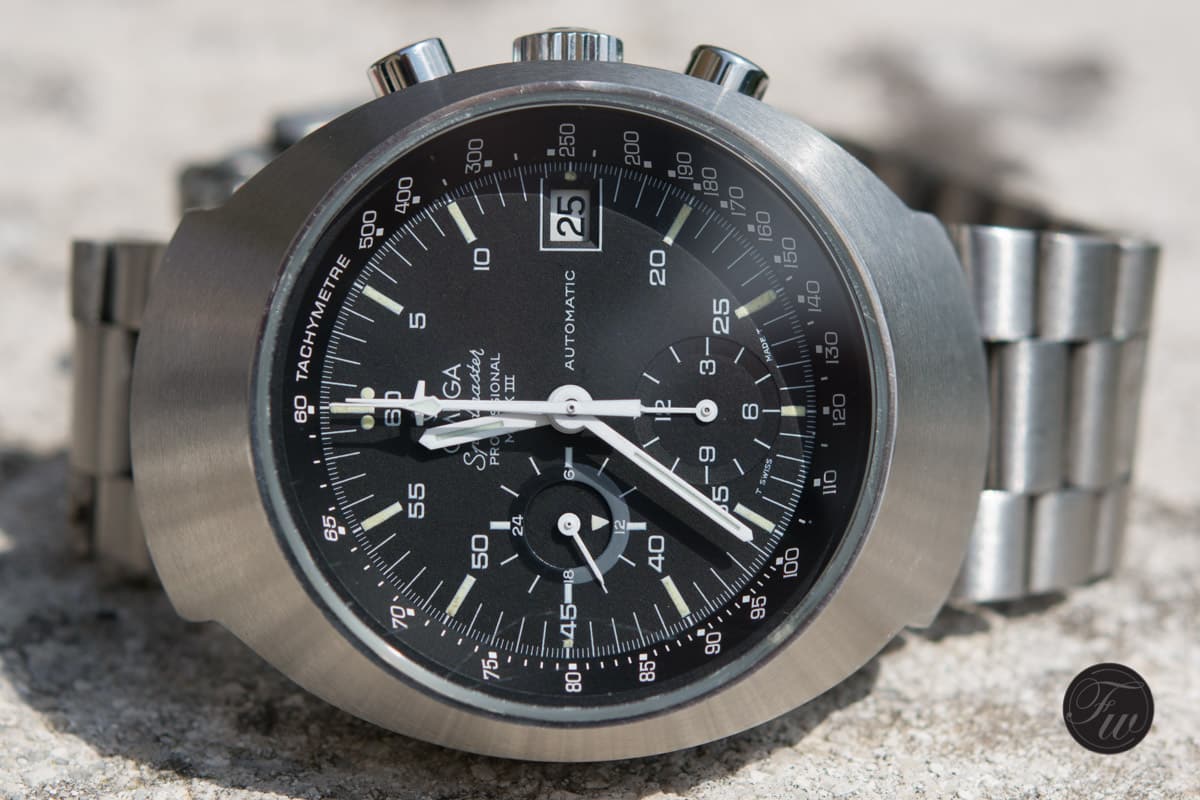 The use of ‘Professional’ on the dial of this Mark III model is a bit confusing. According to a former Omega archives employee, only the later versions of this watch (1973) bear the ‘Professional’ wording on the dial. However, according to the extract of the archives the watch from Ben Oliver was produced in June 1972 and the dial has never been replaced.
The use of ‘Professional’ on the dial of this Mark III model is a bit confusing. According to a former Omega archives employee, only the later versions of this watch (1973) bear the ‘Professional’ wording on the dial. However, according to the extract of the archives the watch from Ben Oliver was produced in June 1972 and the dial has never been replaced.
The models that have no ‘Professional’ on the dial have ‘Omega Automatic Speedmaster Mark III’ written on the dial. Later models have ‘Omega Speedmaster Professional Mark III’ on the dial at 12 o’clock and ‘Automatic’ written to the left of the date aperture at 3 o’clock. I am inclined to think that with ‘later models’, the Omega archives employee referred to models (at least) after May/June 1972. A quick look-up on Chrono24 shows me 9 Speedmaster Mark III watches for sale, only one without the ‘Professional’ wording on the dial and that watch is – according to the seller – dated 1972. As far as I can see it doesn’t matter much for the value of the watch though.
Ben Oliver writes me that “The extract of the records from the Omega archive shows that the watch was produced in June ’72 and supplied to Germany. I bought it from a vintage dealer in Hong Kong, along with a 321-calibre Speedmaster Professional. The dealer also had a Memomatic that I liked, but my wife drew the line at two! I sent this MkIII back to the Omega factory in Bienne for a light restoration, but they said that the 1040-calibre movement was in great condition. It had a full service, a light refinish of the case and original bracelet, and new, period-correct hands.”.
No mention of a dial replacement and I have no reason to assume it has been replaced either.
 As you can see in the photos above, this watch is huge. Owner and wearer Ben Oliver has a nice car to watch analogy for his Omega Speedmaster Professional Mark III: “I really love the watch, despite the fact that it won’t fit under most shirt cuffs. Two people have offered to buy it off my wrist – that’s never happened to me before, but maybe it’s because it’s almost always visible!
As you can see in the photos above, this watch is huge. Owner and wearer Ben Oliver has a nice car to watch analogy for his Omega Speedmaster Professional Mark III: “I really love the watch, despite the fact that it won’t fit under most shirt cuffs. Two people have offered to buy it off my wrist – that’s never happened to me before, but maybe it’s because it’s almost always visible!
I’m a car guy, and I think of the MkIII like the Porsche 928. Just like the 911, Omega had a real classic in the Moonwatch, but in the late sixties they worried that it would soon be outdated. So, just like Porsche, they introduced possible replacements that were more fashionable, but didn’t have the original’s timeless appeal. So, just like the 928, the MkIII soon fell out of favour while the original has continued until now. But now these watches (and the 928!) look cool again, and have real period appeal. And there’s some horological interest to the 1040-calibre movement: Omega might have been beaten to the first automatic chronograph in 1969, but when they produced one with this movement, it was of very high quality.”
The funny note is that during the event in Italy, we came across a car photographer from Germany who was also wearing the same Omega Speedmaster Pro Mark III series. In a slightly less condition than Ben’s watch, but still awesome. It seems that this watch is a real conversation maker, as Ben and the German photographer discussed their watches briefly which gave me the opportunity to take some photos of the two Speedmaster Mark III watches together. Something you will probably rarely see.
 It occurred to me that there were more Omega Speedmaster watches than I expected to see ‘in the wild’ in Italy. Of course, car events are probably the place to be to spot interesting watches, but I would have guessed the place would be flooded with Rolex watches. As a friend of mine wrote me on Facebook the other day “More Rolex on wrists than fish in the lake!!”.However, most of the OmegaSpeedmaster watches spotted were the good ol’Moonwatch models. Only twoSpeedmaster Mark III series could be identified.Below are some close-up photos of the watch. The bracelet on the Mark III is reference 1162 (same as on the Speedmaster Mark II). The shot of the dial shows the central minute and second hand for the chronograph function as well as the 24 hour indicator on 9 o’clock. Besides the black dial, there were also a silver dial version and blue dial version available at the time time (in 1971-1973).
It occurred to me that there were more Omega Speedmaster watches than I expected to see ‘in the wild’ in Italy. Of course, car events are probably the place to be to spot interesting watches, but I would have guessed the place would be flooded with Rolex watches. As a friend of mine wrote me on Facebook the other day “More Rolex on wrists than fish in the lake!!”.However, most of the OmegaSpeedmaster watches spotted were the good ol’Moonwatch models. Only twoSpeedmaster Mark III series could be identified.Below are some close-up photos of the watch. The bracelet on the Mark III is reference 1162 (same as on the Speedmaster Mark II). The shot of the dial shows the central minute and second hand for the chronograph function as well as the 24 hour indicator on 9 o’clock. Besides the black dial, there were also a silver dial version and blue dial version available at the time time (in 1971-1973).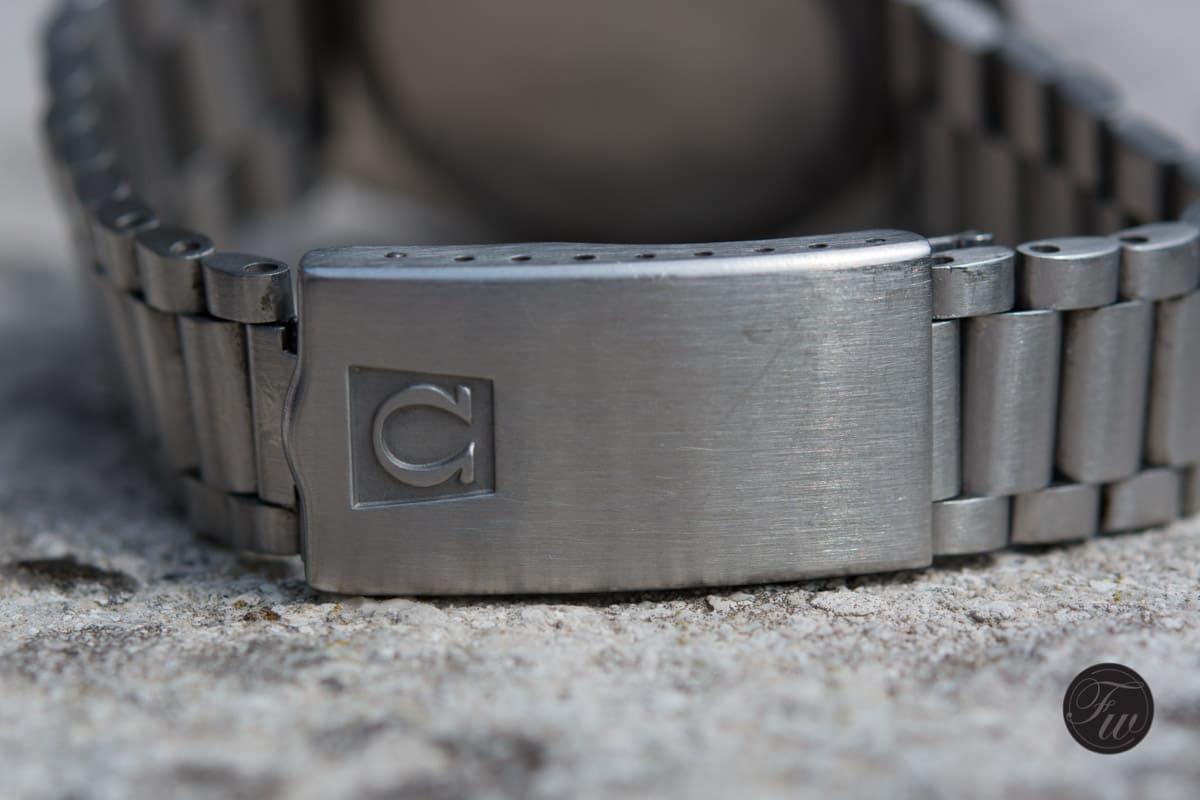 The big fat case of the Speedmaster Pro Mark III reference 176.002 measures 41mm (width) x 51.6mm (length) and is no small watch by all means. It belongs to that specific period in time (1970s) when funky large watch cases were considered modern. With the re-edition of the Speedmaster Mark II series (here is an article on the original Mark II) it shows that there is again interest in clunky 1970s shapes and perhaps that these designs are becoming ‘iconic’ as well.
The big fat case of the Speedmaster Pro Mark III reference 176.002 measures 41mm (width) x 51.6mm (length) and is no small watch by all means. It belongs to that specific period in time (1970s) when funky large watch cases were considered modern. With the re-edition of the Speedmaster Mark II series (here is an article on the original Mark II) it shows that there is again interest in clunky 1970s shapes and perhaps that these designs are becoming ‘iconic’ as well.
As Ben Oliver puts it: “I’ve always loved Omegas of this period, and it’s great that Omega is acknowledging their appeal by reissuing watches like the Seamaster Bullhead and the Speedmaster MkII. But I wonder if the MkIII has too dramatic a shape to sell well as a reissue now. And I do find the prices puzzling – I know the reissued MkII has a co-axial movement, but it seems odd to pay £4000 for an homage when the watch that is being paid homage to can be bought for £1000, or less. A good MkIII like this is worth at least double that now, so I dread to think what Omega would ask for a modern reissue!
I have some other chronographs from this period – I think it was a great time for watch design. I’m looking out for a good Speedmaster 125, and a big-case Breitling Navitimer Chronomatic 1806 to go with the manual-wind Cosmonaute I already have – but I don’t think I’d swap the MkIII to get one!”
I tend to agree with Ben on the fact that the shape of the Mark III is a bit too extreme to have a remake done. However, the Omega Spacemaster Z-33 was based on the legendary Omega Flightmaster watches and that case is very similar to the Mark III 176.002 case.
 The Speedy Pro Mark III series watch is an impressive timepiece that is not for the faint hearted. That an awkward Speedmaster like this is on the wrist of a car – and especially Porsche – fan did not come as a surprise to me. Remember our article on the Speedmaster 176.012 from 1974 on the wrist of Porsche 911 guru Magnus Walker?
The Speedy Pro Mark III series watch is an impressive timepiece that is not for the faint hearted. That an awkward Speedmaster like this is on the wrist of a car – and especially Porsche – fan did not come as a surprise to me. Remember our article on the Speedmaster 176.012 from 1974 on the wrist of Porsche 911 guru Magnus Walker?
A huge thank you to Ben Oliver for playing! Make sure to follow him on Twitter as well (@thebenoliver).

